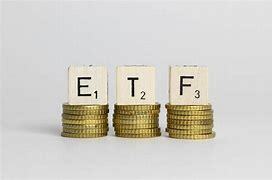
ETF is an acronym for exchange-traded funds, an investment method that monitors the rate of transactions in one or more markets. The fund participates in the market in two ways – either following the market trend or converting the trade to physical assets. The trade happens in the stock market, performing similarly to stocks. Their role is to mimic indices, investment trusts, and other exchanges. You can use an ETF to track the progress of a sector, stock, index, currency, commodity, or fixed income market.
ETFs are of many types; each performance is on a specific stock. Below are some ETFs familiar to traders.
Diversified passive equity ETFs rely on many stock market criteria such as the MSCI Europe Australasia far East (EAFE) indexes, the S&P 500 and the Industrial Average of Dow Jones.
Most index-based ETFs are used to keep a close eye on benchmarks.
Niche passive equity ETFs focus on the Russell 2000 companies and the S&P 500. The ETF offers suggestions on making better portfolio plans that combine the same stocks similar to their reference indexes.
Active equity ETFs enable the manager to judge based on self-experience or thought rather than relying on a benchmark index. Although the system attracts higher risk, it may offer stocks that outperform the market benchmark.
Fixed-income ETFs are used to monitor bonds. The method has a stable portfolio but yields lower results which can manage major Fixed-income ETFs.
The market has many ETFs, making it hard to select. But to be on the safer side with the right one for your goals. ETFs have three options available to traders.
The type of ETF
ETFs are of many types, such as asset types used to monitor stocks, commodities, currencies, etc. The method is either leverage, long or short.
The ETF’s size
The ETF displays the total value of investment it holds, which is referred to as assets under management (AUM). The larger the fund, the easier it is to liquidate, unlike smaller ones with lower spreads, but you can make a more significant profit in the long run.
The structure of ETFs
ETFs are either physical or synthetic. The physical ones focus on the underlying behavior of the market, while the synthetic one aims at derivatives. The two options have pros and cons that need to be understood before taking a stand. For example, the physical types display your investment and come with less risk, unlike the latter. In addition, the trends in some markets make it difficult to use physical replication or make them less efficient. However, synthetic imitations expose the manager to markets that are impossible for others.
ETFs have many advantages, such as:
Tax efficiency — ETFs attach lesser tax unlike other conventional mutual funds. ETFs are considered to be stocks, and the selling attracts taxable gains. In addition, trade is only possible on changes happening within their indicator, making it tax efficient.
Low expenses — these are ETFs that attract lower yearly fees that are actively managed. Managers make trades based on benchmarks which lower the collected funds.
Flexible trading — since ETFs are like stocks, they use immediate prices, and trades are possible the entire day. The price is determined at the end of the day.
No minimum investment — ETF shares can be purchased at a minimum, unlike other conventional funds with a bench limit.
Diversification — An ETF creates a diversified portfolio. For example, buying shares from the technology industry may have lesser risk, unlike buying from one technology firm. In addition, an ETF is able to assess many technology companies.
FOR MORE INFORMATION ON HOW PAT RASKOB CAN BEST HELP YOU WITH YOUR TAX FILING NEEDS, PLEASE CLlICK THE BLUE TAB ON THIS PAGE.
THANKS FOR VISITING.
Pat Raskob